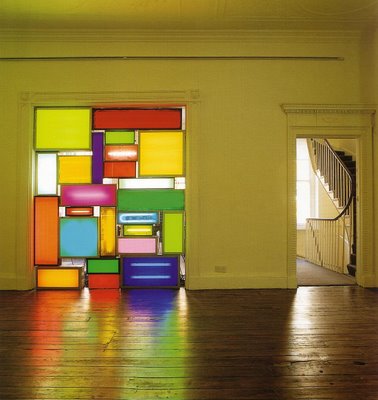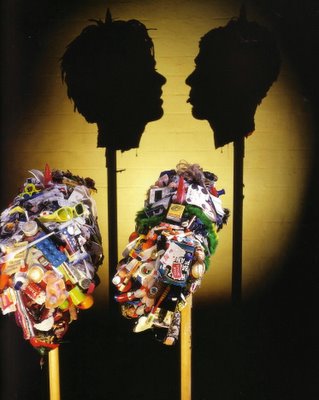Contemporary Work by David Bachelor
Candelabra 3 on display at the Bloomberg Space(click on the image to see it larger)

 Barrier 2002
Barrier 2002

 Barrier 2002
Barrier 2002





Liam Gillick used perspex panels to produce a similar effect in his Turner Prize nomination of 2002.
Below is an image of a pane of glass etched by myslef and light projected through it.
Although the light is projected it bounces back off the wall towards the viewer - bathing the eyes in colour if not the whole person. I also took a movie, since the light source has a rotating colour wheel causing the colours to change; I have not worked out how to post movies as yet though - my first attempts failed! More later.


Walter De Maria's 'Lightning Field'.
Tim Noble and Sue Webster's 'Miss Understood and Mr Meanor' (destroyed in the warehouse fire in 2005), and 'Fountain' 2004.


And finally two of my own drawings - with an overhead projector and a sparkler drawing.